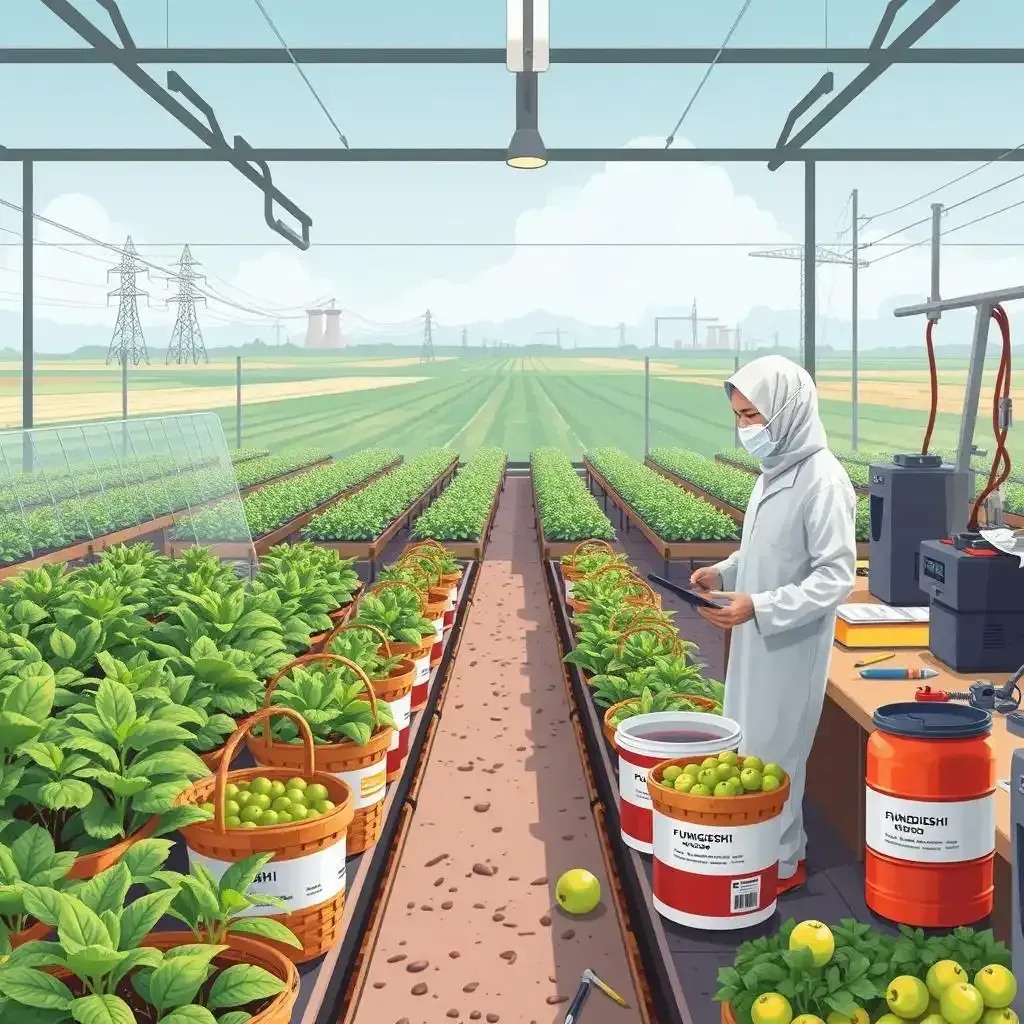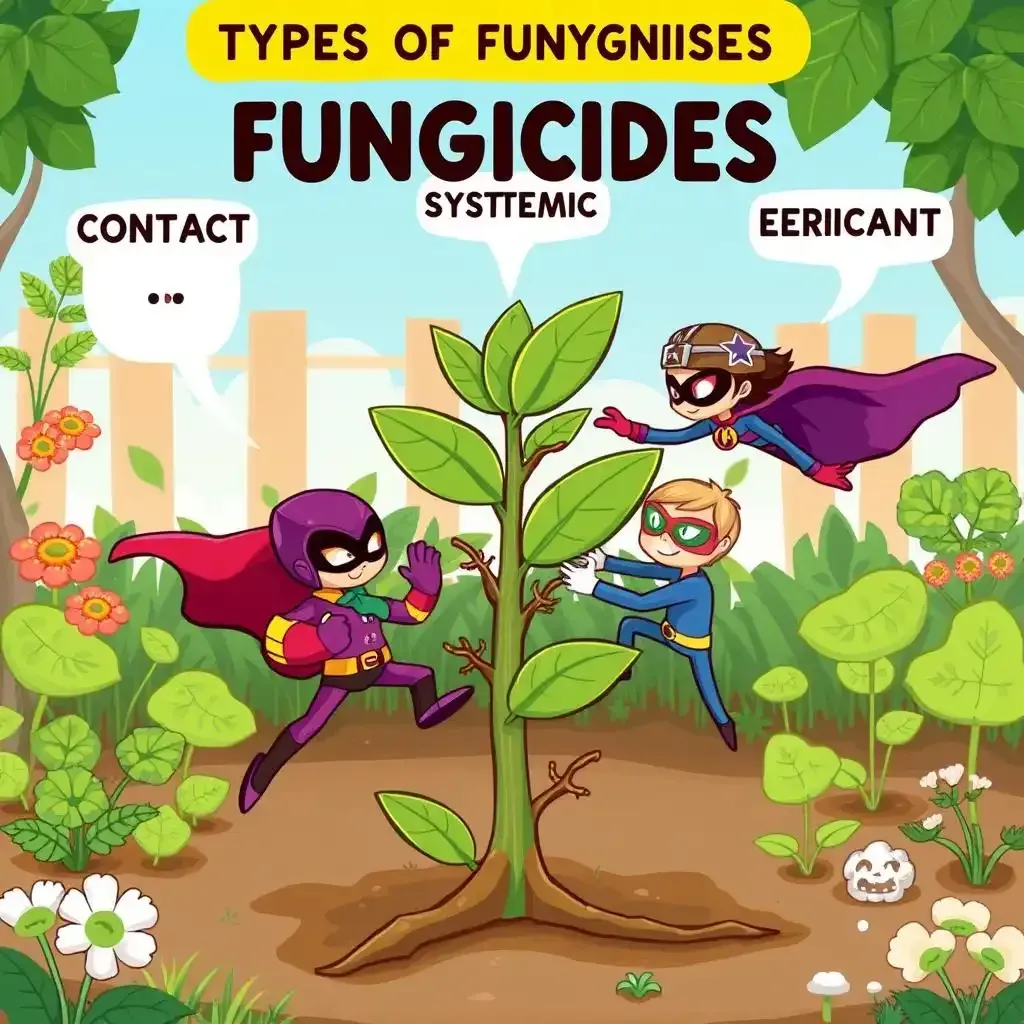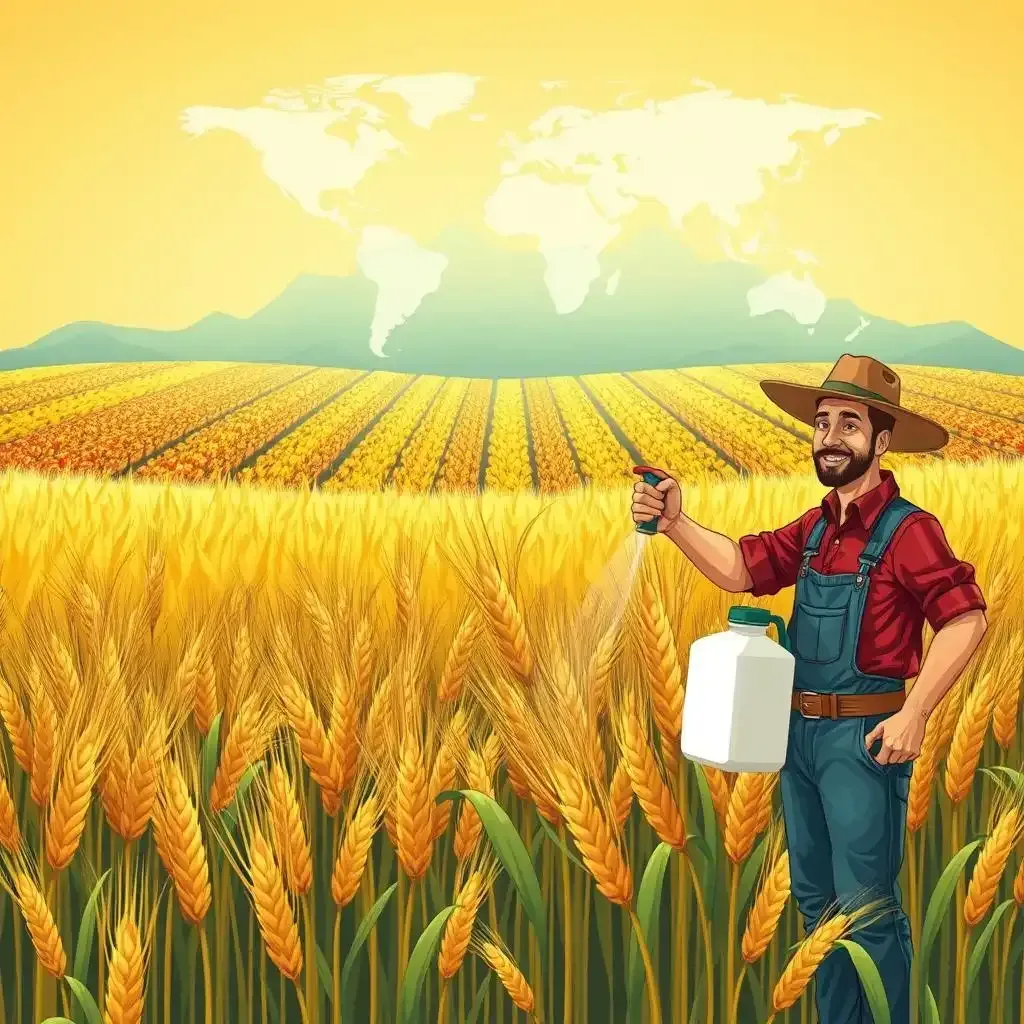Table of Contents
Fungicides are a critical component of modern agriculture, but how much do you really know about them? These powerful substances play a pivotal role in protecting crops from parasitic fungi, ensuring food security and economic stability. However, their use also comes with significant responsibilities. In this article, we'll explore the basics of fungicides, their various types, their importance in global food security, and the importance of responsible use. Whether you're a farmer, a gardener, or just curious about the agricultural industry, this article will provide you with valuable insights. Join us on lilyflower.homes to learn more and find how fungicides are shaping the future of food production.

Powerful Fungicides: Ultimate Guide
Understanding Fungicides and Their Role in Agriculture
Fungicides are like the superheroes of the plant world. They swoop in to save crops from nasty fungal attacks. Imagine a garden where tomatoes, potatoes, and other plants are growing happily. Suddenly, a fungal disease threatens to destroy the harvest. Fungicides come to the rescue, knocking out the fungi and protecting the plants. But it's not just about saving the plants; it's about ensuring that we have enough food to go around.
- Fungicides control harmful fungi
- They protect crops from diseases
- Ensure food security
Without fungicides, farmers would struggle to maintain healthy crops. For instance, blight, a common fungal disease, can devastate entire potato fields. Fungicides help prevent such losses, making sure that we have an abundant supply of fresh produce. But it's not just about the harvest; it's also about the economic impact. When crops are safe, farmers can earn a decent living, and the community benefits from fresh, local produce.
For example, if you're growing lilies in your garden, you might encounter fungal issues like rust. Using the right can help keep your lilies healthy and blooming. Just like how a gardener needs the right tools to keep a garden thriving, farmers need fungicides to protect their crops. It's all about balance and responsible use.
Fungal Disease | Common Plants Affected | Fungicide Solution |
|---|---|---|
Blight | Potatoes, Tomatoes | Copper-based fungicides |
Rust | Lilies, Wheat | Triazole fungicides |
Powdery Mildew | Grass, Roses | Sulfur-based fungicides |
So, next time you enjoy a juicy tomato or a beautiful lily, remember the heroes behind the scenes. Fungicides play a crucial role in keeping our plants healthy and our plates full. But with great ability comes great responsibility, and that’s where the next section comes in. Stay tuned to learn more about the different types of fungicides and how they work.
Types of Fungicides and How They Work

Types Of Fungicides And How They Work
Now that we know fungicides are essential for saving our plants, let's examine into the different types and how they do their magic. Imagine fungicides as different types of superheroes, each with their unique powers to fight off fungal villains. There are four main types: contact, systemic, protectant, and eradicant fungicides.
Contact fungicides are like a shield that forms a protective layer on the plant's surface. They prevent fungi from getting a foothold, but they don't kill fungi that have already invaded the plant. Think of them as the defensive line in a football game. They're great for preventing new infections but not so much for curing existing ones. For instance, if you notice rust on your lilies, a contact fungicide can stop it from spreading to other parts of the plant. Check out our for more tips.
Fungicide Type | How It Works | Best For |
|---|---|---|
Contact | Forms a protective layer on the plant surface | Preventing new infections |
Systemic | Moves inside the plant to treat existing infections | Curing internal fungal issues |
Protectant | Protects plants from future fungal attacks | Preventive measures |
Eradicant | Kills fungi that have already infected the plant | Curing severe infections |
diseases prevention guide has more details on identifying and treating common plant diseases.
Protectant fungicides, as the name suggests, protect plants from future fungal attacks. They create a barrier that prevents fungi from gaining entry. These are like the security guards of the plant world, standing at the gate to keep intruders out. They're best used as a preventive measure, especially during times when your plants are more vulnerable to fungal attacks, such as during wet weather. For instance, if you're growing tomatoes, using a protectant fungicide can help keep blight at bay. You can find more tips on to avoid creating a fungal-friendly environment.
The Importance of Fungicides in Global Food Security

The Importance Of Fungicides In Global Food Security
Fungicides are like the knights in shining armor of the agricultural world. They protect our crops from devastating fungal diseases, ensuring that we have enough food to feed the world. Imagine a field of wheat, golden and swaying in the breeze. Suddenly, a fungal disease like rust starts to spread. Without fungicides, that beautiful field could turn into a wasteland of lost potential. But with the right fungicide, the crops stand a fighting chance.
Take, for example, the devastating impact of late blight on potatoes. This disease, responsible for the Irish Potato Famine, can wipe out entire fields in a matter of days. Fungicides help farmers prevent such catastrophic losses. They ensure that the potatoes you enjoy at dinner are healthy and safe to eat. But it's not just about the food on your plate; it's about the economic stability of farmers and the communities that rely on them. For more on how to care for your lilies and prevent fungal issues, check out our .
- Protect crops from fungal diseases
- Ensure food security and economic stability
- Support global food production
Fungicides also play a crucial role in the global market. Countries that export a significant amount of agricultural products rely heavily on fungicides to maintain the quality and yield of their crops. Without these powerful tools, the global food supply chain would be at risk. Farmers in developing countries, who often have limited resources, depend on fungicides to maximize their harvests and support their families. For more tips on caring for your garden, visit our .
But the importance of fungicides extends beyond just the harvest. They also help maintain the nutritional value of our food. Fungal diseases can reduce the nutrient content of crops, making them less beneficial for consumption. By using fungicides, farmers ensure that the food we eat is not only safe but also nutritious. This is especially important in regions where access to diverse and healthy food options is limited.
Fungal Disease | Crop Affected | Economic Impact |
|---|---|---|
Rust | Wheat, Barley | Significant yield loss, economic instability |
Late Blight | Potatoes, Tomatoes | Historic famines, crop destruction |
Powdery Mildew | Grapes, Cucumbers | Reduced crop quality, lower market value |
So, the next time you bite into a fresh, juicy apple or enjoy a bowl of rice, remember the unsung heroes behind the scenes. Fungicides are indispensable for global food security, and their responsible use is key to a sustainable future. Visit lilyflower.homes for more insights and resources on agricultural practices and plant care.
Responsible Use and Management of Fungicides
Understanding the Environmental Impact
Hey there, fellow writer! So you're diving into the world of fungicides? It's a fascinating, and sometimes tricky, topic. Think of fungicides like powerful medicines for plants – they can cure diseases, but they also need to be used carefully. We don't want to harm helpful insects or pollute our water sources, right? It's like giving your plants a dose of medicine: too little, and the disease wins; too much, and you could hurt the patient. Responsible use means following instructions carefully, using the right amount, and only when it's truly necessary. Sometimes, other methods, like improving plant health with better soil and watering, can do the trick without needing harsh chemicals. Check out our for some natural alternatives.
- Read and follow label instructions carefully.
- Use the correct application method and amount.
- Consider the environmental impact before using fungicides.
- Explore other methods for disease management.
Minimizing Risks and Protecting the Environment
Protecting the environment when using fungicides is super important. Think of it like this: fungicides are like a targeted weapon against fungal diseases. We want that weapon to hit its target precisely, without causing collateral damage. Using fungicides responsibly means minimizing runoff into waterways. Imagine if all that fungicide washed into a nearby stream – it could harm fish and other aquatic life. That's why proper application techniques are so crucial. We need to aim for precision, using the right amount at the right time. We should also consider using fungicides only when absolutely necessary, exploring other options first, like improving soil health or using disease-resistant plant varieties. For example, if you're noticing powdery mildew on your roses, you could try adjusting your watering practices before resorting to a fungicide. For more on proper watering, check out our .
Action | Environmental Benefit |
|---|---|
Follow label instructions | Reduces risk of over-application and pollution |
Use targeted application methods | Minimizes fungicide drift and runoff |
Explore alternative disease management | Reduces reliance on chemical fungicides |
Final Thought
Fungicides are essential tools in the fight against crop-damaging fungi, and their responsible use is crucial for maintaining global food security. By understanding the different types of fungicides and their mechanisms, we can better appreciate their importance and the need for careful management. As we move forward, it is essential for both farmers and consumers to stay informed and supportive of sustainable agricultural practices. Visit lilyflower.homes for more in-depth information and resources on fungicides and their role in agriculture.